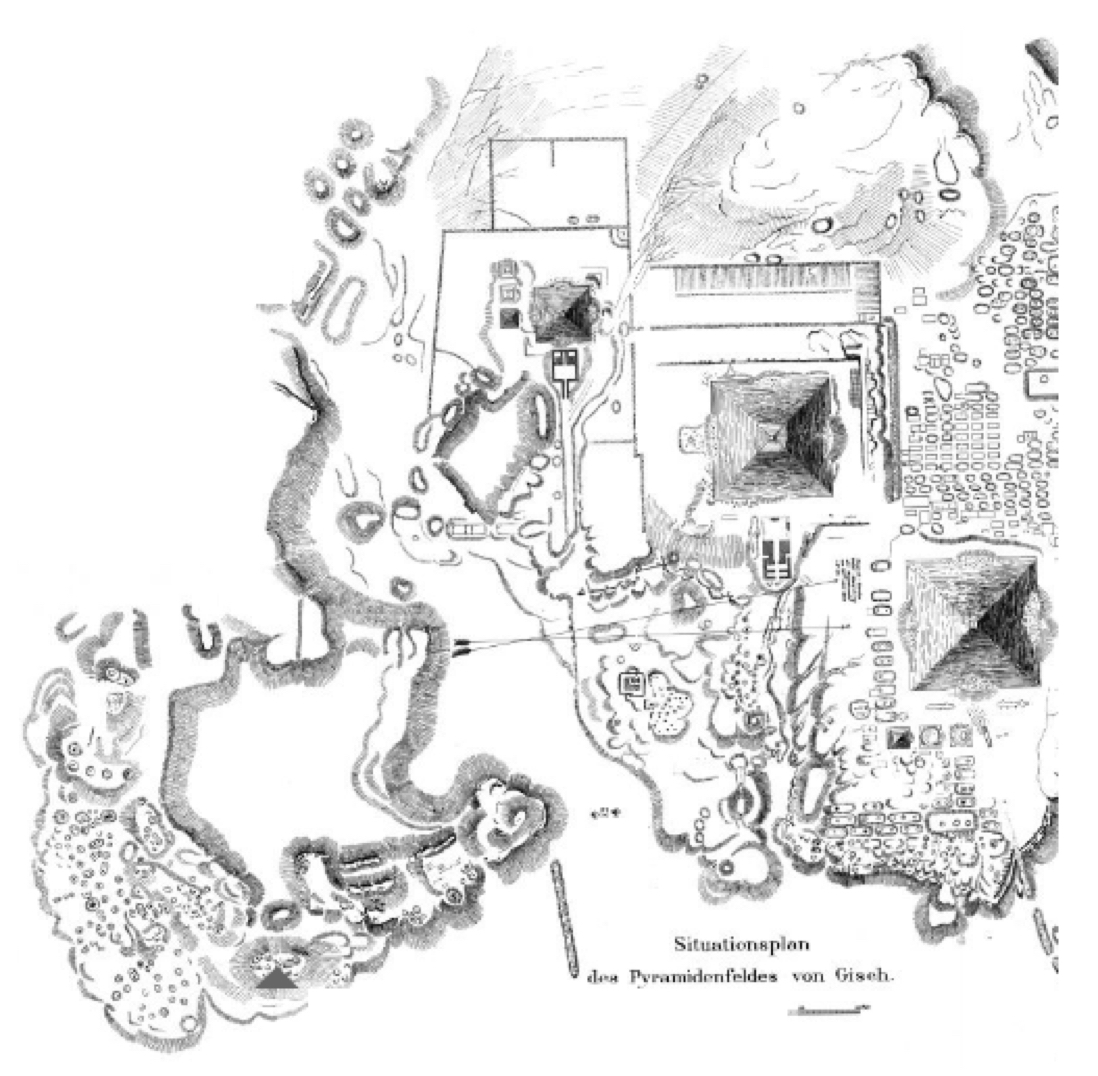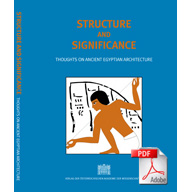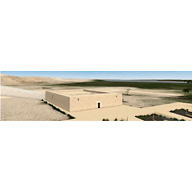-
- Format
- Article
-
- Language
- ENGLISH
-
- Series
- Österreichische Akademie der Wissenschaften Denkschriften der Gesamtakademie
-
- Year Published
- 2005
-
- Number of Pages
- 29
-
- Citation Text
- Hawass, Zahi. "Khufu's National Project: The Great Pyramid of Giza in the Year 2528 B.C." In Peter Jánosi, ed. Structure and Significance: Thoughts on Ancient Egyptian Architecture, Vienna: Verlag der Österreichischen Akademie der Wissenschaften, 2005, pp. 305-334.
-
- Individual - Ancient
- Djedefre
- Henutsen (G I-c)
- Hetepheres I (G 7000 X)
- Isesi
- Kawab (G 7110-7120)
- Khafre
- Khentkaus [I] (G 8400)
- Khufu
- Menkaure
- Meretites I
- Neferirkare
- Pepi I
- Snefru
- Userkaf
-
- Author
- Zahi Hawass, Egyptian
-
- Individual - Modern
- George Andrew Reisner, American, 1867–1942
- Mark Lehner, American
-
- Editor
- Peter Jánosi, Austrian
-
- Publisher
- Verlag der Österreichischen Akademie der Wissenschaften
-
- Site Name Khufu Pyramid Complex
-
- Site Name Khufu Pyramid Complex
-
- Site Name Khufu Pyramid Complex
-
- Site Name Khufu Pyramid Complex
-
- Site Name Khufu Pyramid Complex
-
- Site Name Khufu Pyramid Complex
-
- Site Name Khufu Pyramid Complex
Ancient People
-
- Type Individual - Ancient
- Remarks Third king of Dynasty 4. Son (?) of Khufu.
-
- Type Individual - Ancient
- Remarks Wife of Khufu.
-
- Type Individual - Ancient
- Remarks Wife of King Snefru, founder of Egypt’s Fourth Dynasty, and mother of King Khufu, builder of the Great Pyramid. Her burial was hidden in a secret chamber (labeled G 7000 X) nearly 90 feet underground, and contained beautiful pieces of gilded and inlaid wooden furniture, silver jewelry, and a large alabaster sarcophagus that was found to be mysteriously empty.
-
- Type Individual - Ancient
- Remarks King of Dynasty 5. Horus name: [Dd-xaw] Djedkhau; other names: [Dd-kA-ra] Djedkare, [jssj] Isesi
-
- Type Individual - Ancient
- Remarks Owner of G 7120, along with Hetepheres [II] (original owner of G 7110). Son of Khufu and Meretites [I]. Appears in chapel relief in tomb of his daughter Meresankh III (owner of G 7530-7540), main room (east wall), identified as [jrj-pat sA nswt smsw n Xt=f Xrj-Hb Hrj-tp xrp jAwt nTrt aA dwAw] hereditary prince, king's eldest son of his body, chief lector-priest, director of divine offices, assistant of (the god) Duau; in situ in G 7530-7540). Also mentioned in tomb of his steward Khemetnu (owner of G 5210).
-
- Type Individual - Ancient
- Remarks Fourth king of Dynasty 4. Son of Khufu. Builder of the Second Pyramid at Giza and probably of the Great Sphinx as well. Known two thousand years later by the Greeks as King Khephren. A number of diorite and greywacke statues and statue fragments depicting the king have been discovered in Khafre's valley temple, including Cairo CG 9-17. The fragmentary head of an alabaster royal statue (MFA 21.351 + MFA 33.1113) is attributed to Khafre.
-
- Type Individual - Ancient
- Remarks Owner of G 8400. Possible daughter of Menkaure. Chapel entrance door jambs and fragments of false door inscribed for Khentkaus, identified as [mwt nswt-bjtj nswt-bjtj sAt nTr] mother of the two kings of Upper and Lower Egypt, daughter of the god; in situ in G 8400. Alternately the titles may read [nswt-bjtj mwt nswt-bjtj sAt nTr] king of Upper and Lower Egypt, mother of the king of Upper and Lower Egypt, daughter of the god.
-
- Type Individual - Ancient
- Remarks Second king of Dynasty 4, son of Snefru. Builder of the Great Pyramid at Giza, the only one of the Seven Wonders of the Ancient World still standing. Known two thousand years later by the Greeks as King Cheops. Horus name: [mDdw] Medjedu. Full birth-name: Khnum-Khufu.
-
- Type Individual - Ancient
- Remarks Fifth king of Dynasty 4. Son of Khafre. Husband of Khamerernebti II. Builder of the Third Pyramid at Giza. Known two thousand years later by the Greeks as King Mycerinus.
-
- Type Individual - Ancient
- Remarks Wife of Khufu and mother of Kawab (G 7120), Meresankh [II] (G 7410) and Meretites (G 7650). Appeared with her son on west wall of G 7120 chapel room b (tomb of Kawab), three fragments (24-12-1000, 24-12-1002 and possibly 24-12-1122) may belong to this scene; fragments found displaced in G 7120 chapel rooms c and d and space in between.
-
- Type Individual - Ancient
- Remarks Third king of Dynasty 5.
-
- Type Individual - Ancient
- Remarks Second king of Dynasty 6.
-
- Type Individual - Ancient
- Remarks First king of Dynasty 4. Father of Khufu.
-
- Type Individual - Ancient
- Remarks First king of Dynasty 5. Horus name: [jrjmAat] Irymaat.
Modern People
-
- Type Individual - Modern
- Nationality & Dates American, 1867–1942
- Remarks Egyptologist, archaeologist; Referred to as "the doctor" and "mudir" (Arabic for "director") in the excavation records. Nationality and life dates from Who was Who in Egyptology.
-
- Type Individual - Modern
- Nationality & Dates American
- Remarks Director of Ancient Egypt Research Associates (AERA) and Giza Plateau Mapping Project (GPMP).
-
- Type Editor
- Nationality & Dates Austrian
-
- Type Author
- Nationality & Dates Egyptian
- Remarks Former Minister of State for Antiquities and Secretary General of Supreme Council of Antiquities
-
Verlag der Österreichischen Akademie der Wissenschaften
- Type Publisher
Name of this image
Description of the image duis mollis, est non commodo luctus, nisi erat porttitor ligula, eget lacinia odio sem nec elit. Sed posuere consectetur est at lobortis. Donec sed odio dui.

Sign up for My Giza | Log in
Email ‘My Latest Project’ Collection
Current Collaborators
- Heather ONeill heather@pixelsforhumans.com
- Nicholas Picardo npicardo@fas.harvard.edu
- Luke Hollis luke@archimedes.digital


